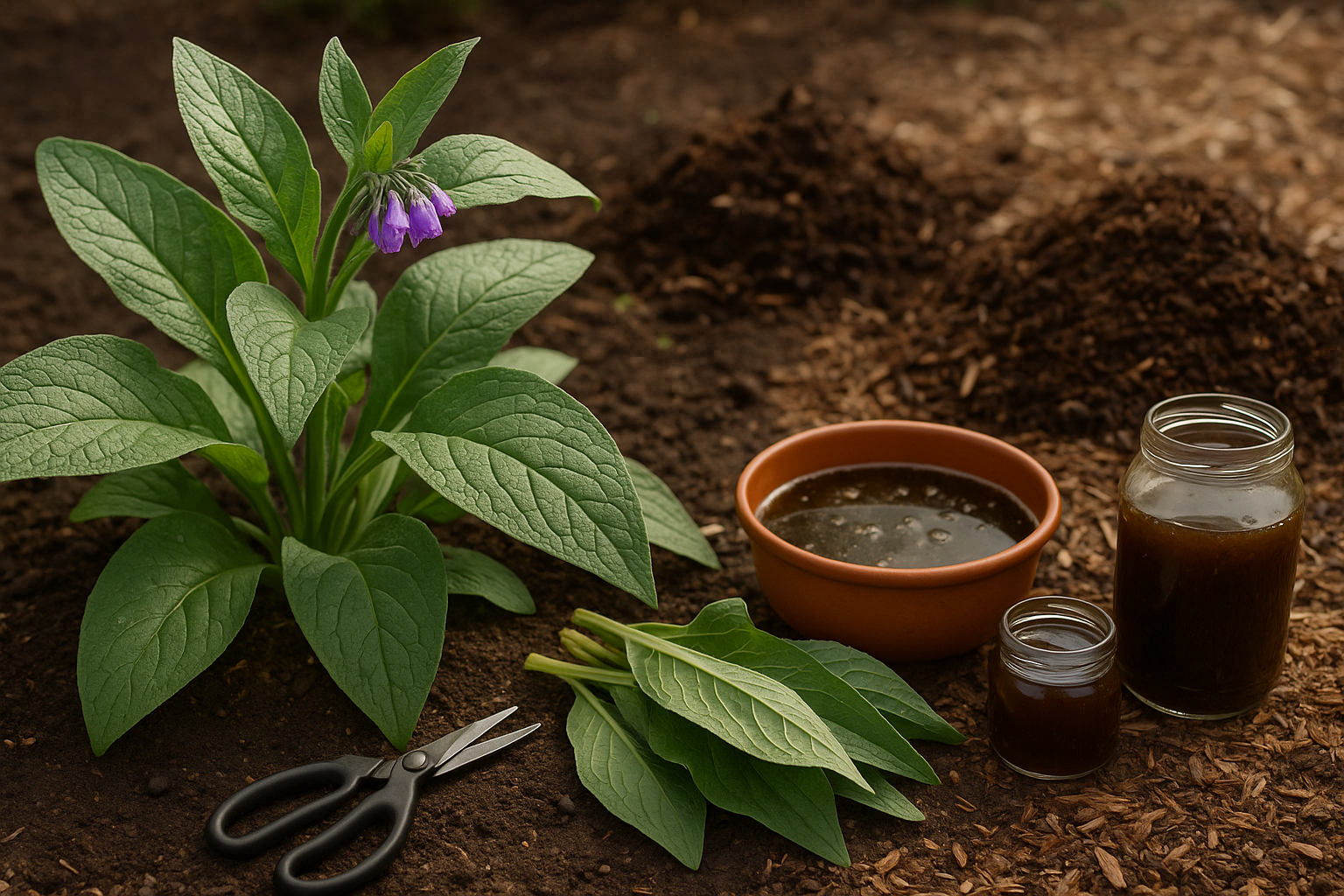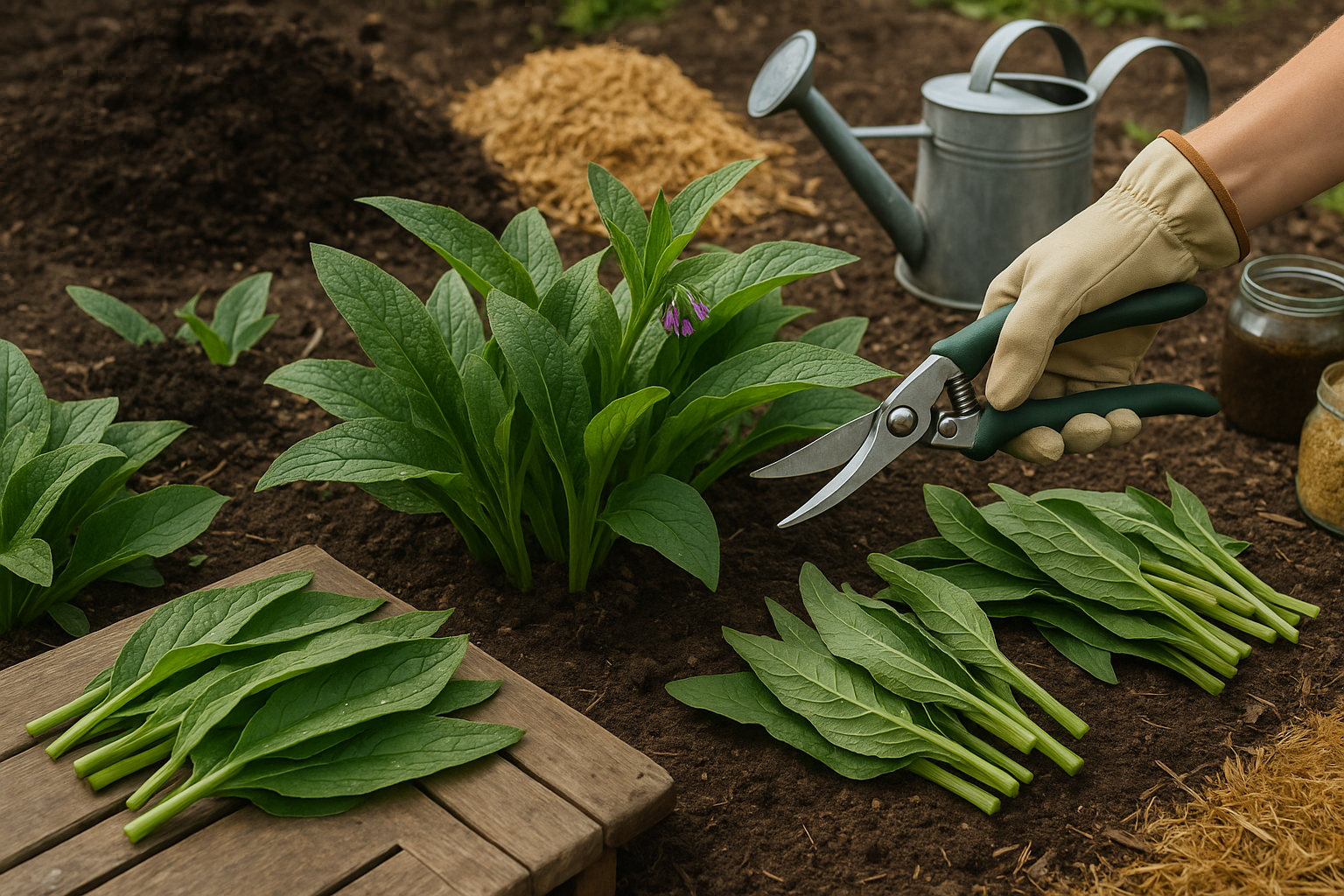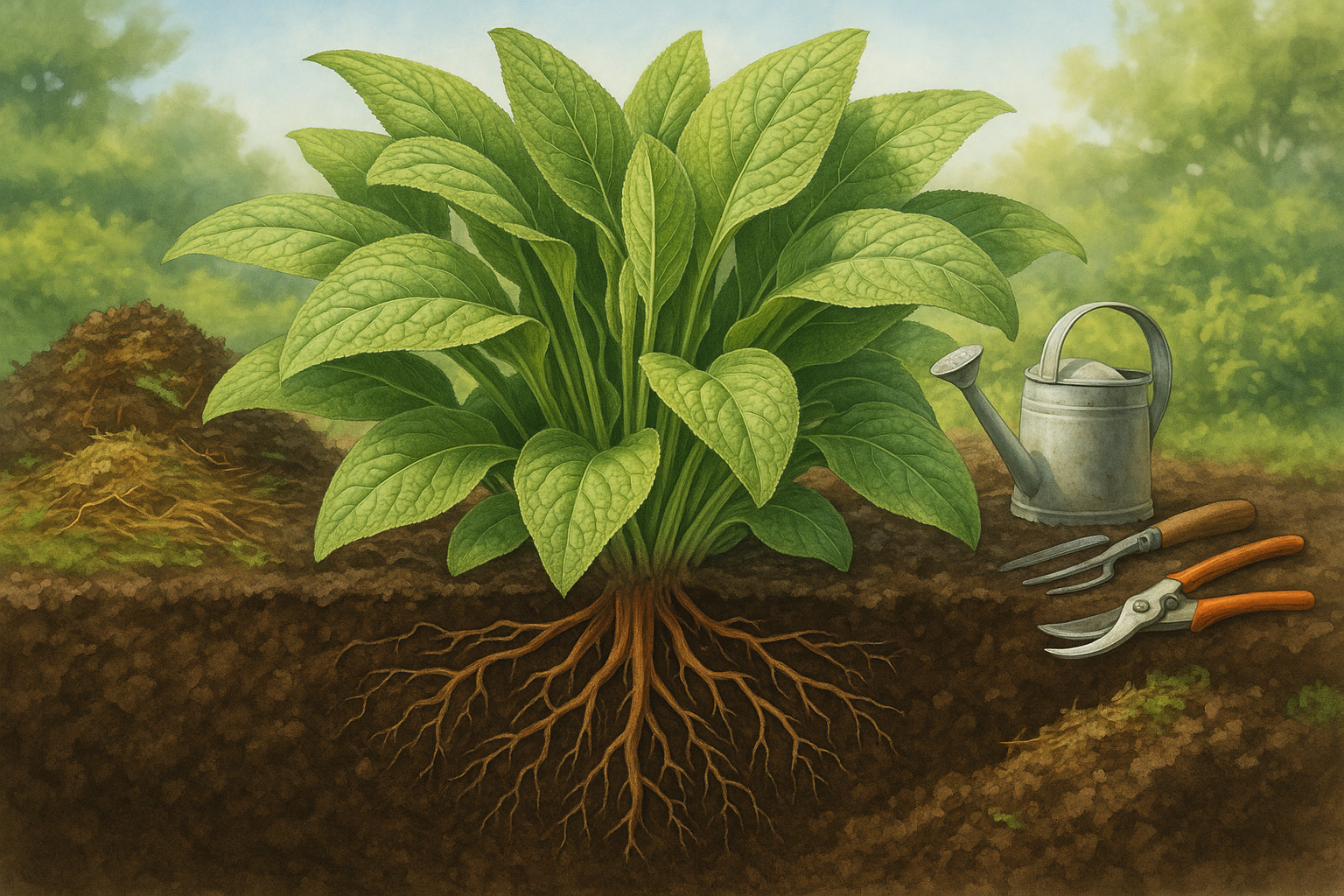Introduction
Does comfrey regrow after being cut down? Gardeners and herbal enthusiasts often marvel at this perennial powerhouse, known for its role in composting, herbal remedies, and enriching the soil. If you’ve recently cut back your comfrey and are wondering whether it will spring back, you’re not alone.
The good news: comfrey boasts impressive regenerative abilities, making it a favorite for sustainable gardens. In this post, we’ll tackle the core question—can you regrow comfrey after cutting it down? We’ll walk through how comfrey regrows, what you should do to encourage healthy regrowth, and some real-world care tips to keep your plant thriving year after year.
Plus, you’ll discover why this cycle of regrowth is so valuable, both for your garden’s productivity and your compost pile. Get ready to unlock the true potential of comfrey in your backyard!
Understanding Comfrey and Why It’s Grown

Comfrey is a hardy perennial herb known for its deep roots and large, fuzzy leaves—a staple in many eco-friendly gardens. Among the most popular varieties are Russian comfrey (Symphytum × uplandicum), which is sterile and prized for its rapid growth, and common comfrey (Symphytum officinale), recognizable by its purple bell-shaped flowers.
Gardeners often choose comfrey for its remarkable versatility. One of its standout uses is as a natural fertilizer. By “chopping and dropping” the leaves, you can create a nutrient-rich mulch or make a potent liquid fertilizer—commonly called “comfrey tea”—that fuels tomatoes, potatoes, and other hungry plants. Livestock owners also value comfrey as a protein-rich supplement, especially for chickens, goats, or rabbits—though moderation is key due to its high alkaloid content.
Comfrey’s deep taproots mine minerals that other plants can’t reach and bring them up to the surface, making it excellent for improving soil health over time. Its ability to bounce back after repeated harvests means you can cut it several times a season with no harm. Plus, it thrives in a range of conditions—from full sun to partial shade, and in both wet and dry soils.
This resilience makes comfrey an almost “set it and forget it” plant, providing reliable biomass and soil benefits year after year. No wonder it’s a top choice among permaculture gardeners and anyone seeking an effortless, sustainable boost for their garden ecosystem.
What Happens When You Cut Comfrey Down?
When you harvest comfrey, you’ll usually do it in one of two ways: either by snipping off individual leaves or by cutting the whole plant down to just a few inches above ground. If you’re gathering comfrey for fertilizer or compost, most gardeners recommend a tougher approach—chopping all the leaves and stems, leaving only a short stump behind.
Comfrey plants are robust thanks to their deep taproots, which can stretch several feet underground. When you cut comfrey, the plant responds quickly by channeling stored energy from its roots to grow new shoots and leaves. This natural resilience makes comfrey an all-star for repeated harvesting; you can often get three to five full regrowth cycles per season.
If you just pluck leaves here and there for small-scale use (like mulch, animal feed, or herbal remedies), the plant’s response is mild—new leaves emerge steadily without much pause. However, a full chop-back triggers a more dramatic growth spurt as the plant works to restore its leafy canopy.
The main difference between light and hard harvesting comes down to recovery speed: severe cuts for fertilizer result in a more vigorous flush of tender, nutrient-rich foliage, perfect for compost tea or garden beds, but may stress young or less-established plants.
To keep comfrey healthy over the long term, wait until it’s well-rooted before severe cutting, and allow the plant to flower at least once a year to build up root reserves. This way, you ensure a thriving, productive comfrey patch season after season.
Can Comfrey Regrow? The Science and Real-World Experience
Comfrey is famous for its almost unstoppable regrowth, and the secret lies in its unique root system—a deep taproot that can reach well below the surface and a vigorous crown where new shoots emerge. This hardy structure lets comfrey bounce back quickly, even if most of its above-ground growth is cut or removed.
Scientific studies confirm that comfrey’s taproot can extend several feet down, tapping into nutrients and water most other plants can’t reach. As a result, gardeners like Susan from Oregon report that “even a tiny piece of comfrey root left in the soil will sprout again,” making it nearly impossible to remove completely without careful digging. Another gardener, Mike from the UK, shared that after harvesting his comfrey patch for compost, new leaves started reappearing within just two weeks, thanks to the plant’s energetic regrowth.
However, while comfrey’s resilience is legendary, it’s not completely invincible. Overharvesting—cutting the plant too frequently without giving it time to recover—can weaken the crown and slow future growth. Additionally, rare but possible issues like root rot, especially in consistently wet soils, or viral diseases can compromise the plant’s health and ability to regrow.
To maximize your comfrey’s regenerative powers, give it time between cuts and plant it in well-drained soil. Overall, with its robust root system and tenacious spirit, comfrey is an almost foolproof choice for gardeners seeking a reliable, renewable resource.
Best Practices for Cutting and Encouraging Regrowth

To keep your comfrey thriving and productive, timing and technique are everything. The best time for your first cut is when the plant is about 18 to 24 inches tall and before it flowers—usually in late spring. Use clean, sharp shears to cut the stems a few inches above the crown, making sure to leave several healthy leaves so the plant can photosynthesize and rebuild energy.
Wait until the plant fully regrows, which generally takes four to six weeks, before making the next harvest. For most climates, two to four harvests a season is ideal. Avoid cutting too short or harvesting too frequently, as this stresses comfrey and can weaken its root system over time.
Between cuts, keep the soil rich and loosely aerated with organic matter, as comfrey is a heavy feeder. Add compost or aged manure around the base after each harvest for a nutrient boost. Water deeply during dry spells, but don’t let the ground become waterlogged—good drainage prevents root rot.
Mulching with straw or leaf mold helps retain moisture, suppress weeds, and slowly enriches the soil as it breaks down. Watch for signs of over-harvesting, such as slow regrowth or yellowing leaves, and give the plants a rest if needed. With mindful cutting and nourishing care, your comfrey patch will keep yielding lush leaves year after year.
Using Regrown Comfrey
After harvesting your regrown comfrey, you’ll find plenty of practical uses that can boost your garden’s productivity. One of the easiest ways is to add chopped comfrey leaves directly to your compost pile. They’re rich in nitrogen and potassium, which speed up decomposition and enrich the finished compost.
Mulching with comfrey is just as effective—simply lay fresh leaves around your veggies or fruit bushes to suppress weeds, conserve moisture, and gradually feed the soil as the leaves break down.
For a homemade liquid fertilizer, steep chopped comfrey leaves in a bucket of water for several weeks. The resulting “comfrey tea” is packed with nutrients and makes a fantastic natural feed for tomatoes, peppers, and potatoes. Just dilute it until it’s the color of weak tea before applying.
Comfrey can also be dried and used as bedding for livestock, but it’s important to note some safety precautions: comfrey contains pyrrolizidine alkaloids, which can be toxic in large amounts if consumed by animals or humans. Limit its use as edible forage, and don’t add comfrey to compost intended for livestock bedding if your animals tend to nibble on it.
Regularly cutting comfrey (every month or two during the growing season) not only encourages vigorous regrowth but also ensures you have a steady supply for your compost, mulch, and liquid feed needs year-round.
By integrating comfrey into your gardening routine, you create a sustainable loop—plants feeding soil, soil feeding plants—helping your garden thrive with minimal waste.
Troubleshooting and FAQs About Comfrey Regrowth
If your comfrey isn’t regrowing as expected, don’t panic—this hardy plant usually bounces back with just a little care. A lack of regrowth is often due to insufficient water, heavy clay soil, or too much shade. Try improving drainage and ensuring your plant gets at least a few hours of sun each day.
Pests rarely bother comfrey, but watch for slug or snail damage on tender shoots. Handpicking or using organic barriers works well to keep them at bay. Root rot can occur if the soil stays overly wet, so avoid planting in boggy spots and ensure good airflow around the base.
If your comfrey’s yields are low, it may benefit from an annual spring top dressing with compost or a bit of organic fertilizer.
FAQs
- You can safely cut your comfrey down two to four times a season, leaving at least a few inches of growth so it can recover.
- Most comfrey plants live and regrow for decades if left undisturbed, making them a fantastic long-term addition to any garden.
- Even new gardeners can succeed with comfrey—it’s one of the most forgiving perennials and often comes back stronger after each cutting.
Conclusion
Comfrey’s impressive regrowth ability makes it a powerhouse for any garden, bouncing back quickly after harvest and providing a steady supply of nutrient-rich leaves. Its deep roots draw up minerals, enriching your soil and making it a fantastic choice for compost or mulch.
If you’re looking for a low-maintenance, high-benefit plant, comfrey is an easy win. Don’t hesitate to start with a small patch—watch how it thrives and experiment with using its leaves around your other plants.
For more tips, explore gardening guides or online forums, and enjoy discovering all that comfrey can offer your garden.
